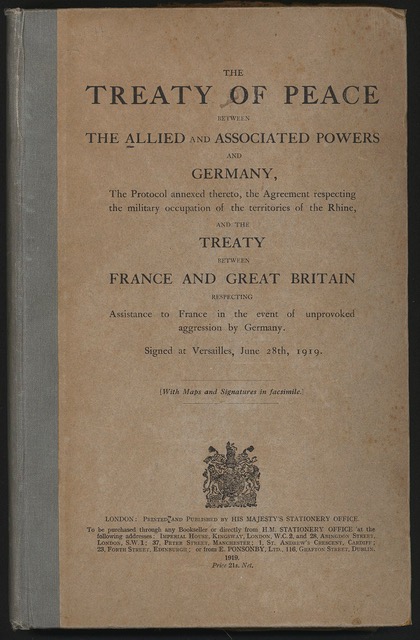The Treaty of Versailles, officially ending WWI, was signed in the Hall of Mirrors in the Palace of Versailles, Paris, France.
After five years of war, the treaty was signed between the Allied Powers, which included the United States, Britain, France, Canada, Australia, South Africa, New Zealand, India, Italy, Japan, and Germany. Germany’s allies within the Central Powers signed separate treaties.
Germany was required to disarm, put Kaiser Wilhelm on trial, extradite war criminals, recognise states that had become independent from the German Empire, and pay reparations to the Entente powers. Many, such as English philosopher and economist John Maynard Keynes, claimed that the terms of the treaty were too harsh on Germany and could only be counterproductive. Germany was required to repay 50 billion marks.
Resentment toward the treaty sowed the seeds for the rise of the Nazi party in Germany. However, it is disputed how much Germany actually paid in war reparations. The German government claimed it paid the equivalent of 67.8 billion gold marks, the Reparation Commission put the figure at 20.5 billion gold marks, while in 1998 the British historian, Niall Ferguson, estimated that German only paid 19 billion.

